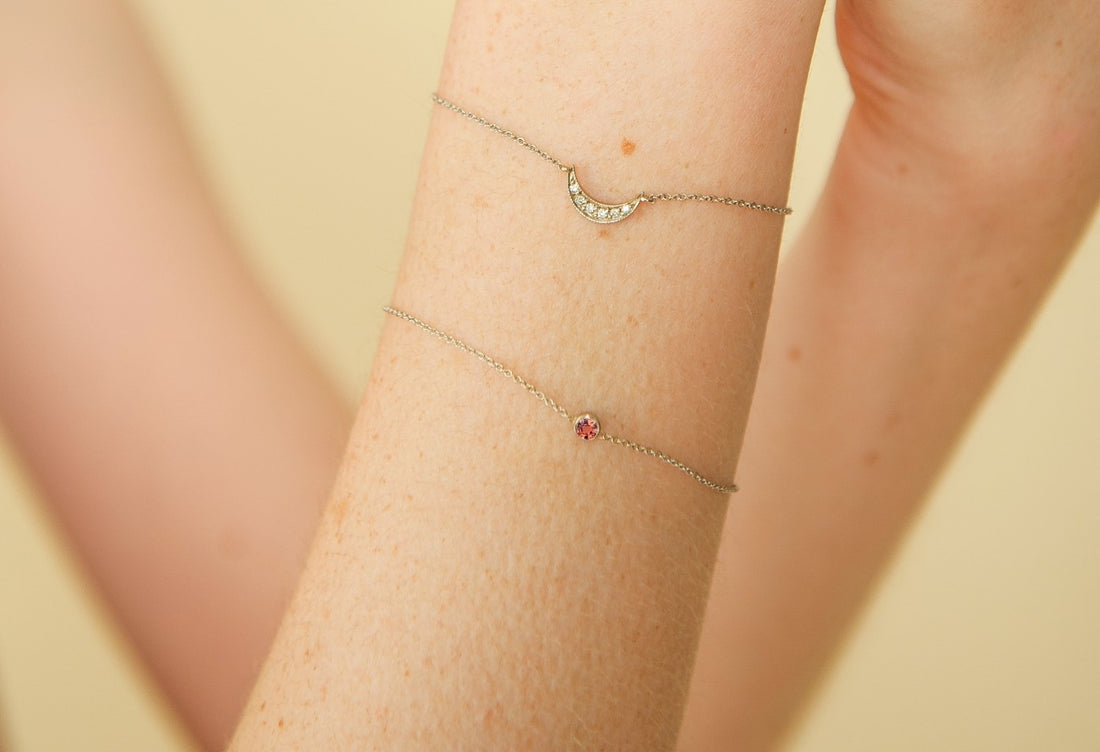
Garnet: THE STONE OF HEALTH
Believed to hold properties of regeneration, the garnet is fit for the season of resolutions.
MEET GARNET: JANUARY'S BIRTHSTONE
Garnet the “stone of health” has been visually tied to the Pomegranate's rich symbolic history for centuries, symbolizing ceremonial new beginnings as the birthstone of the first month of the year. Etymologically, it is believed the name garnet originates from the Latin granatus, meaning "pomegranate" in reference to the similarity of the deep red color of pomegranate seeds. The name garnet also refers to both "grain" and "seed" often giving a sense of growth and fecundity, in all areas of life for the months to come.
The theme of abundance also manifests in the garnet family’s range of color, which expresses itself in a full spectrum; from rarer greens to classic deep reds. For any January birthdays, holiday gifts, or treats for yourself, you can shop our Garnet collection. The Garnet Birthstone Bracelet can be seen as a commitment piece which showcases the stone with simplicity, and the Garnet Birthstone Charm may recall the garnet’s classic Victorian elegance when hanging on a short choker chain (Bridgerton look anyone?).
 |
CHEMICAL COMPOSITION
Garnets are actually a group of stones with the same crystal form but each species with a different chemical composition, including pyrope, almandine, spessartine, grossular, and andradite. One of the most widespread of gems, Garnets can be found in metamorphic rocks (transformed by heat and pressure) on every continent and different species of Garnet are the official state gems of four U.S. states. Today they are most commonly mind in Brazil, Russia, Africa, India, and Afghanistan.
 Photo courtesy of the Met Museum. Pectoral and Necklace of Sithathoryunet with the Name of Senwosret II Photo courtesy of the Met Museum. Pectoral and Necklace of Sithathoryunet with the Name of Senwosret II |
 Image courtesy of Christie's. A Greek gold and garnet snake armband, late 4th to 3rd century BCE.
Image courtesy of Christie's. A Greek gold and garnet snake armband, late 4th to 3rd century BCE.
|
HISTORY
Signet rings in ancient Rome featured garnet intaglios that were used to stamp the wax that secured important documents. Garnets were so popular during these times, that ancient Roman historian, naturalist, and philosopher, Pliny the Elder, took it upon himself to document the history of gemstones and considered garnets to be one of the most widely traded gemstone in the world.
In the 1500's, a Victorian love for the dark red gem lead to the blossoming of a lively garnet industry blossomed in Czechoslovakia. During this time, the play on garnet’s pomegranate namesake was often brought forth in fanciful designs which mimicked the fruit.
|
Photo courtesy of 1st Dibs. Ancient Roman Garnet Intaglio Gold Ring, 400 CE. |
Photo courtesy of Lang Antiques. Dusky wine red faceted garnet pendant and locket, turn-of-the-century Czechoslovakia. |
LORE & MYSTICAL PROPERTIES
In Ancient Armenia it was traditional for the new bride to throw a pomegranate against a wall, the crimson jewel-like seeds that were revealed were a sign of fertility and new beginnings.



